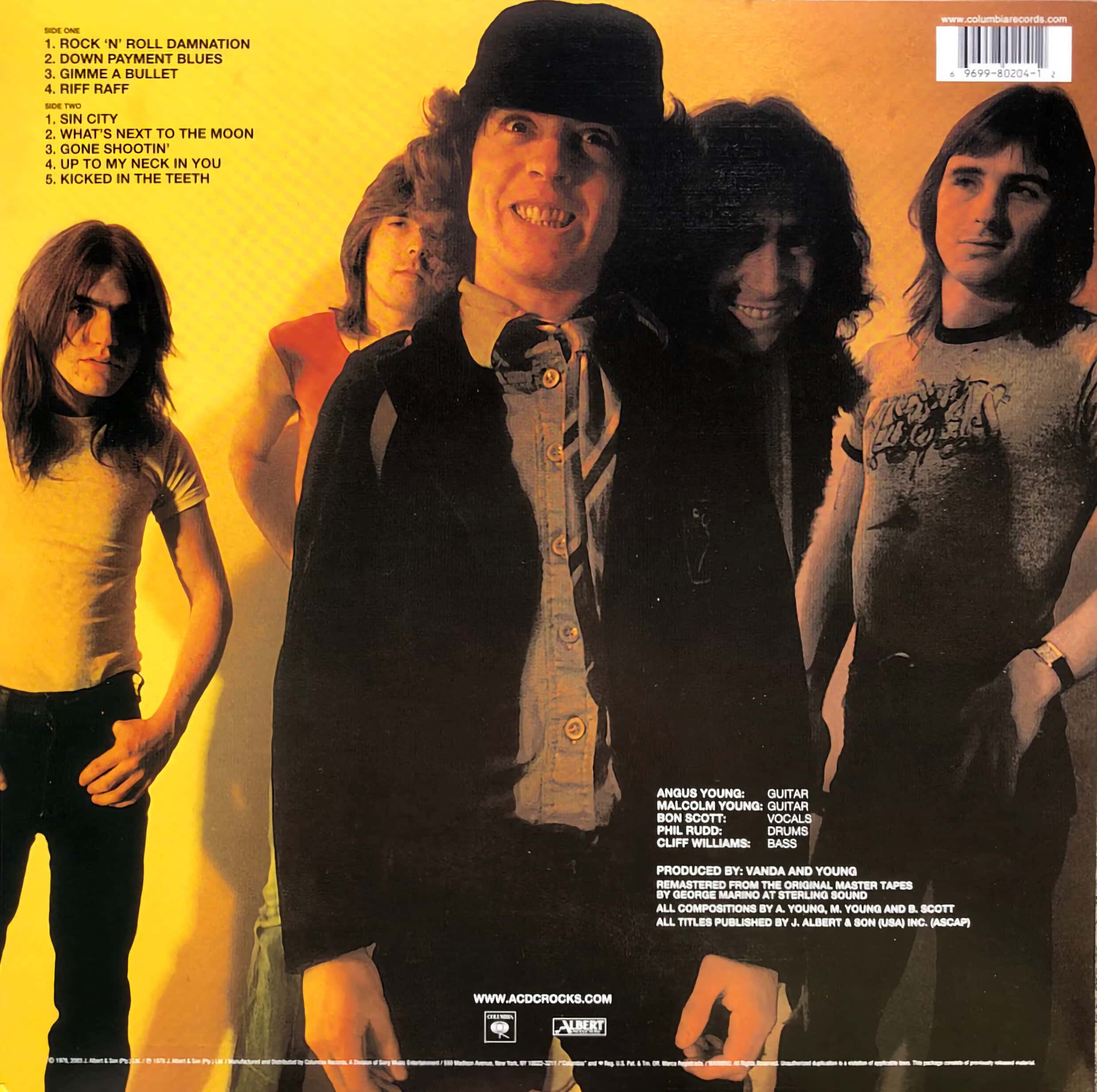Released in 1981, For Those About To Rock (We Salute You) is AC/DC's eighth studio album and is built upon the success of their previous records; particularly Back In Black. With a collection of hard-hitting tracks that showcase AC/DC’s signature energy and riff-driven style, For Those About to Rock is one of the best albums released in 1981 and still stands as an exceptional entry in the band's discography.
AC/DC has always had compelling cover art and For Those About To Rock (We Salute You) is no different in that regard. Plus, if you haven’t already, take a look at the animated artwork on Apple Music; it’s fantastic and one of the best examples of the feature. While the physical counterparts will never be able to replicate such wonder, unless a lenticular cover is produced, the vinyl and CD artwork, which is usually embossed, is thoroughly pleasing as well.
Speaking of the Apple Music stream, it’s exceptional! Presented as an Apple Digital Master, it rocks and with plenty of headroom available, you’ll find yourself turning the volume up and rocking out throughout the entire 40-minute masterpiece, with zero fatigue. While I do not doubt that the physical counterparts would be on par with the stream, as they’re derived from the same remastering sessions, when a stream sounds this good it really does make one wonder if they should pick up a physical release. Regardless of how you choose to enjoy For Those About To Rock (We Salute You), one thing is for certain, you’re going to love it.
For Those About To Rock (We Salute You) is the quintessential slow-build opening track that sets the tone for the entire album. With its marching beat, killer riffs, and Brian Johnson’s soaring vocals, you’ll find yourself singing along to the catchy chorus while simultaneously rocking out to this blues-based masterpiece.
Put The Finger On You is a straightforward rock 'n' roll track with a driving rhythm that captures AC/DC’s classic sound. It may not be a standout in the traditional sense, but Put The Finger On You is one of AC/DC’s hidden gems.
Let's Get It Up offers listeners a fluid transition from Put The Finger On You and keeps the momentum going with a catchy riff and infectious chorus. The lyrics, as most of their songs do, play on suggestive themes that are characteristic of AC/DC's cheeky style.
Inject The Venom, with its heavier edge, is a killer hard rock tune. It’s songs such as Inject The Venom that showcase not only the band’s incredible musicality, and Young’s skill on lead guitar, but that they are far greater than their biggest-selling albums.
Snowballed is a mid-tempo rocker with some memorable hooks and bluesy guitar licks, but it’s one of AC/DC’s most uninspiring songs.
Evil Walks has an incredible rhythm and a menacing riff that captures your soul from the very first note. Your body will move involuntarily to the groove, as you strum your air guitar, all while belting out the chorus as if playing on stage with Malcolm Young to one side and Cliff Williams to the other. Evil Walks is another of AC/DC’s greatest recordings that has rarely received the recognition it deserves.
C.O.D. is a straightforward rocker with a catchy chorus, but don’t let that deter you for a run-of-the-mill tune for AC/DC would be a hit for any other band.
Breaking The Rules retains AC/DC’s trademark hard rock edge while being a little more melodic. The chorus is particularly infectious and showcases Johnson’s vocal range. It’s one of their songs, with Johnson on lead vocals, where you can understand the lyrics through his trademark growl, thereby making the song even more compelling than it otherwise would have been.
Night Of The Long Knives with its pounding rhythm and aggressive guitar riffs, stands out as one of the album's heaviest, and most enjoyable, moments. The song's dynamic shifts will keep you engaged throughout and while Night Of The Long Knives was never destined to be a stadium-filling tune, as an album-only track, it’s incredible.
Spellbound closes the album on a high note, despite the song being a more mellow and sonically sombre tune. It’s the rhythm, guitar hooks, and Johnson’s vocals that will capture your attention. It’s also the perfect closer as Spellbound doesn’t only compel you to listen to the album again, but if you choose to reflect on what you’ve just heard, you’ll sit in wonder at the masterful musical experience that is For Those About To Rock (We Salute You).
While For Those About To Rock (We Salute You) may not have achieved the same level of commercial success as its predecessor, it remains an exceptional release and is amongst AC/DC’s finest recordings. Full of memorable riffs, powerful vocals, and energetic performances, For Those About To Rock (We Salute You) is often overlooked which is a shame for had it not followed one of the biggest-selling albums of all time, it would have been more highly regarded. Nevertheless, this is one album that is a must-listen for fans of classic hard rock and AC/DC alike.
![AC/DC – For Those About To Rock (We Salute You) [Album Review]](https://images.squarespace-cdn.com/content/v1/565c1ab5e4b05079e4bfa169/1691976848924-ZZWM8XB8T24NPOTG3APL/AC%3ADC+For+Those+About+to+Rock+%28We+Salute+You%29+Album+Cover.jpg)











